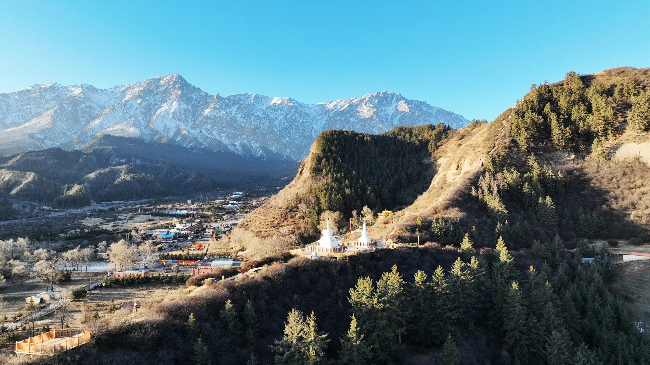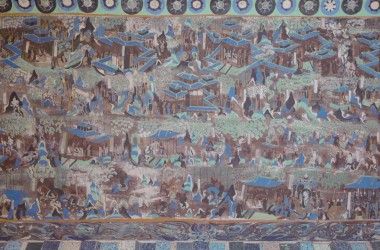Early winter splendor in Matisi, Sunan

The majestic Matisi Temple, located in the northern foothills of Qilian Mountains, Sunan Yugur autonomous county, Zhangye, Gansu province, presents a spectacular view. [Photo provided to gogansu.com]
In early winter, the Matisi Ecological and Cultural Tourism Area presents breathtaking views with its azure skies and golden vegetation.
Located at the northern foot of the Qilian Mountains in Sunan Yugur autonomous county, Zhangye, Gansu province, this scenic spot captures the essence of northwestern China's natural beauty.
Situated in Mati Tibetan town of Sunan, the Matisi (Horse's Hoof Temple) stands 65 kilometers north of downtown Zhangye. This remarkable destination seamlessly integrates Buddhist cave art, the majestic Qilian Mountain landscapes, and rich Tibetan cultural heritage.
The scenic area is where magnificent natural wonders meet millennium-old cultural heritage. Mati Mountain boasts dense forests and year-round snow-capped peaks, creating a stunning backdrop for this historical site.
The Matisi Grottoes complex encompasses seven distinct cave clusters, including the Jinta Temple, Thousand Buddha Caves, North and South Matisi, and the Upper, Middle, and Lower Guanyin Caves. Featuring over 70 cave shrines, it stands as Gansu province's largest cave temple complex after the renowned Mogao Grottoes in Dunhuang, Maiji Mountain in Tianshui, and Bingling Temple in Yongjing.
In early winter, visitors can experience Matisi in its most serene state. This ancient architectural marvel, carved into cliffs between the snow-covered Qilian Mountains and the Hexi Corridor, showcases the distinctive rugged beauty of Northwest China. The withered vegetation and tranquil landscapes create a uniquely peaceful atmosphere that captivates all who visit.

 Appreciate Dunhuang Online (XXXIX)
Appreciate Dunhuang Online (XXXIX)
 >
>